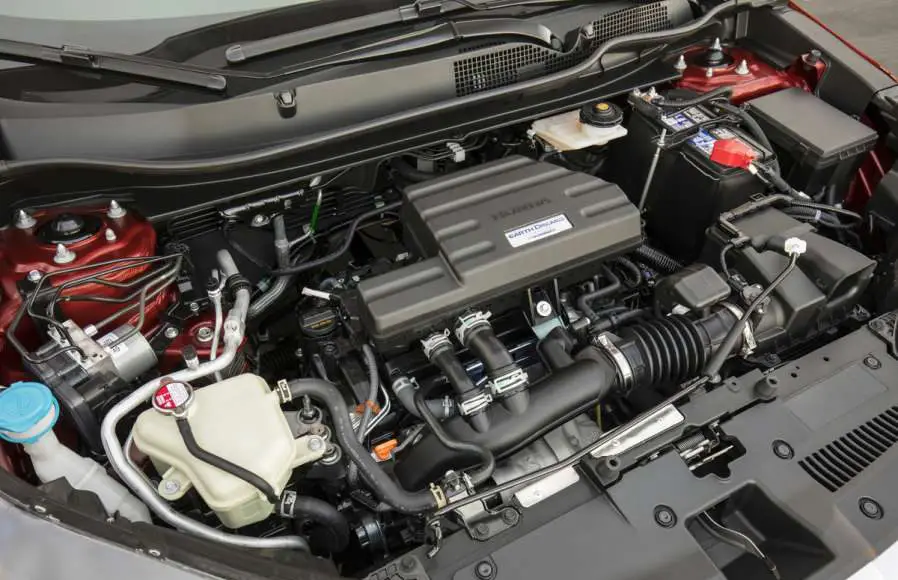I’ve come across Honda’s full statement about the rising fuel-oil issue plaguing certain 2018 Honda CR-V’s, mostly in China.
It’s one thing to quote from a statement given to you by a car manufacturer, letting them tell their side of the story, but to cherry pick parts of their statement to fit your agenda is a bit disingenuous. Earlier this week (Oct. 5, 2018) Consumer Reports released a report on an issue they noticed when they noticed more than a handful of Honda CR-V owners in the United States complaining about fuel in their oil. Upon further investigation, it looks like this was a larger issue in China, so much so that Honda almost issued a recall before it was summarily rejected by a regulatory watchdog group. Honda responded with a full statement to Consumer Reports explaining their side of the story, but, if you read the handful of quotes from Consumer Report’s story, as one person on Temple of VTEC put it, you’re left with a bad taste in your mouth towards Honda. In my opinion, it looks like Consumer Reports left out several key quotes for a reason.
I’m posting Honda’s statement here but I’ve uploaded it elsewhere for you to read here.
Consumer Reports states that Honda,
“…didn’t say exactly how it would repair the SUVs, how many cars in the U.S. might be affected, whether it would cover all CR-V owners or only those who have experienced problems, or why it took the company so long to acknowledge the situation and identify a fix for American consumers. “
While that is true and Consumer Reports did quote that Honda was working on a remedy, CR failed to quote the first part of Honda’s statement which said.
Honda has received some reports in the United States of irregularly high oil levels in certain 2017-2018 Honda CR-V vehicles equipped with 1.5-liter engines, primarily from the northern areas of the country during extreme cold weather conditions combined with short, intermittent driving.
Anyone with a third-grade comprehension can ascertain that this only affects car’s driving in certain conditions, much like the Honda CR-V’s in China. Consumer Reports further hints at this when they quote a member of the NHTSA that anyone with these 1.5T equipped Honda CR-V’s should be able to make short trips, even in extremely cold temperatures, which is fair, but to not acknowledge that Honda didn’t first state this is a bit disingenuous.
In addressing the oil-fuel issue in China in comparison to the United States, Consumer Reports cherry picks parts of Honda’s full statement when explaining how they’re going about investigating each regional difference. Consumer Reports went out of their way to make an entire multi-paragraph section called “Honda Delays” without quoting WHY Honda was taking so long in the first place.
As per Honda in their statement,
There are differences between vehicles and engines sold in various markets around the world, and it is prudent and appropriate to take time to properly investigate how seemingly-similar symptoms may affect those different configurations and to identify the best strategy for addressing them in each particular market.
Consumer Reports forces Honda to release a fix ASAP under threat of stalling being a dangerous situation despite no reported injuries or deaths related to this high oil-fuel level when all Honda wants to do is take their time in order to come up with a fix that may or may not be different depending on what region of the world you live in.
Consumer Reports ends its report by listing seven actions owners can take without mentioning that Honda wrote similar if not the same advice to 2017-2018 Honda CR-V owners in their own statement. Here’s what Honda said.
We continue to encourage any customer with concerns about their individual vehicle to visit their nearest Honda dealer to have their vehicle inspected…we want to reassure any concerned customers that we have no reason to believe that it affects the safe operation of a vehicle.”
Consumer Reports even has the gall to ask CR-V owners to take Honda to small claims court but admits all you’d win is the cost to repair your CR-V, which, as the repair suggests, is just a bit of programming, so you’d win almost nothing but wasted time.
It looks like Consumer Reports would’ve been better off just copy and pasting Honda’s full statement without having to butcher it to fit, what I’m calling, a negative slant.



